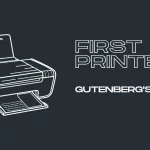Modern architecture has been greatly impacted by the introduction of new technologies. From 3D printing to automated systems, advancements in technology have revolutionized the way we design and construct buildings. From creating intricate designs and reducing the amount of construction waste, technological advancements are making a huge difference in the architecture industry. Let’s take a look at some of the most recent technological advancements in architecture and how they are changing the industry.
- Virtual Reality: VR is a revolutionary technology used by architects to create highly realistic, 3-dimensional virtual environments that can be accessed and explored through a VR headset. This technology allows architects to simulate walking through a building before it is built and identify potential design issues before construction begins. Furthermore, it can be used to create visuals of complex spatial relationships, helping clients gain a better understanding of the proposed design.
- Augmented Reality: AR is similar to virtual reality, but instead of creating a fully immersive environment, AR overlays digital information in the real world. This technology allows architects to visualize designs in context, allowing them to see how a building will look and function in its actual location. AR can also be used to provide clients with a better understanding of the design and how it will fit into the surrounding environment.
- Google Tilt Brush: This is a virtual reality application that enables architects to create 3D artwork and drawings in a simulated environment. This technology provides architects with a novel and creative approach to exploring design ideas, allowing them to rapidly develop concepts and investigate various design alternatives. With Tilt Brush, architects can easily experiment with the shape, color, and texture of their creations, as well as the lighting, to create a unique and immersive experience.
- Touchable Holograms: Touchable holograms allow architects to interact with three-dimensional models in a new and exciting way. With touchable holograms, architects can manipulate digital models with their hands, allowing them to explore the design from all angles and make changes on the fly.
- Additive Design: Additive design, also known as 3D printing, is a technology that has been rapidly growing in popularity in recent years. This technology allows architects to create complex geometries and forms that would be difficult or impossible to create using traditional construction methods. With 3D printing, architects can quickly create detailed models and prototypes, test different design options, and even print full-scale building components. This technology has the potential to revolutionize the construction industry, making it faster, cheaper, and more efficient.
- Architecture Robots: Robots are now being used in the construction industry to automate various tasks. They are designed with the capability to lay bricks, pour concrete, and weld metals with precision and accuracy. This technology can bring many benefits to the industry, such as reducing labor costs, increasing efficiency, and improving safety on construction sites. Furthermore, the use of these robots can drastically reduce the time it takes to build a structure, allowing architects to complete projects faster and more efficiently.
- Generative Design: Generative design is a process that uses algorithms to generate a variety of design options based on specific criteria such as material usage, structural performance, and aesthetic appeal. This technology allows architects to explore multiple design options quickly and efficiently and can lead to more innovative and creative solutions. By using generative design, architects can optimize designs for performance, cost, and sustainability, while also exploring new design possibilities that may have been overlooked in the past.
- 3D Printing: 3D printing has already been mentioned under additive design, but it is worth noting again. This technology is not only useful for creating detailed models and prototypes, but it can also be used to print full-scale building components such as walls, floors, and even entire buildings. With 3D printing, architects can create buildings that are faster to construct, more efficient, and more sustainable.





